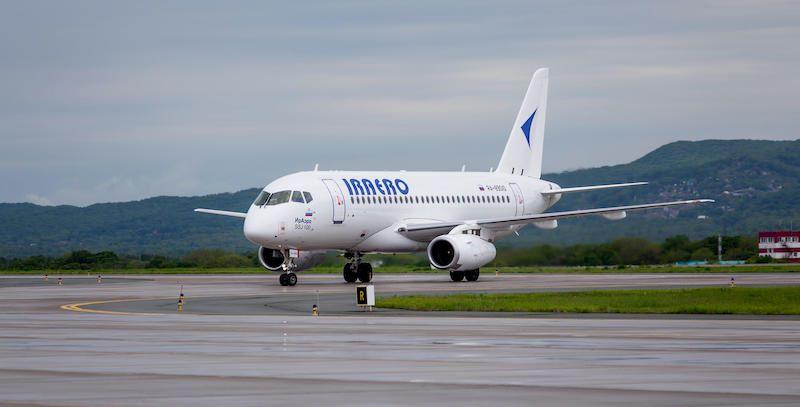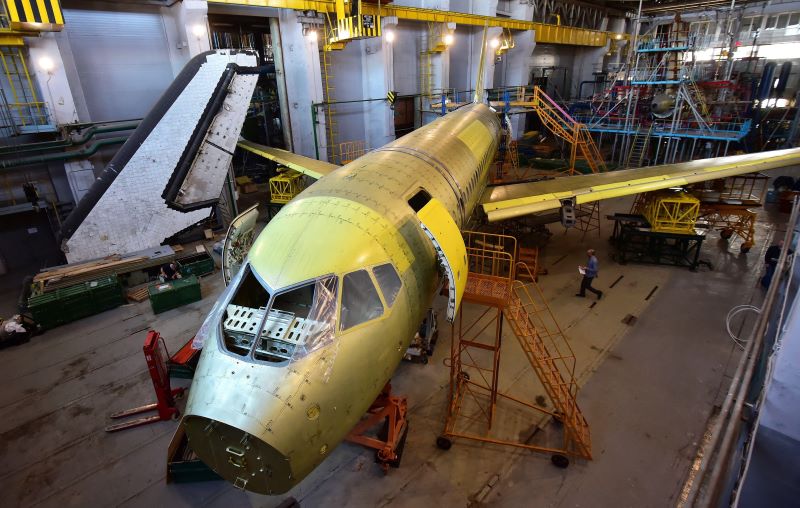Russia’s Superjet Fleet Faces Growing Sustainment Issues

The CEO of SSJ-100 operator IrAero is concerned about the supply of the jet’s Franco-Russian SaM146 turbofan.
Russian MRO providers have learned how to repair just 20% of imported part numbers for Superjet 100 regional jets, the representative of the type’s manufacturer Yakovlev revealed during a recent roundtable with Russian lawmakers.
Foreign suppliers for the Superjet stopped supporting the program in 2022 after Western countries imposed sanctions against Moscow in response to the invasion of Ukraine. Since then, local companies have only been able to repair 178 out of the 903 imported part numbers for the type, Yakovlev said.
Among the successes, the manufacturer disclosed that domestic repair of Superjet’s hydraulic tanks made by U.S.-based Parker and the RD-4000 weather radar made by Honeywell are now both possible. The Superjet’s Michelin tires have been replaced by local products from Barnaul-based tire manufacturer YaShZ Avia. Balashikha-based manufacturer Rubin Aviation has started to supply brake plates to substitute Goodrich components.
Yakovlev said Russian companies that could potentially repair 453 more Superjet components have been found. These companies have confirmed the capability to maintain 318 of those, but no firm contracts have yet been signed. Seven more part numbers can be serviced in so-called friendly countries.
Yakovlev has assembled 213 Superjets since 2011, but only 168 of them remain operational. In Russia, 145 Superjets fly regular passenger services, while 19 more are used for government or corporate flights. Just four SSJ100s are operated by foreign owners—three aircraft by the Royal Thai Air Force and one by Kazakhstan’s National Security Committee.
It remains unclear how widespread the domestic maintenance achievements have become. The largest operator of the type, Rossiya Airlines, confirmed to Aviation Daily in mid-November that it had put Russian tires on only 55 of its 78 Superjets. The carrier did not mention whether it is yet using locally made brake plates.
According to Yakovlev, the Superjet fleet logged a record total flight time in 2022, totaling more than 254,000 hr. Russian airlines deployed the SSJ100s on international routes at that time due to the restrictions imposed on their leased Western-made aircraft. But the monthly flight utilization rate started to shrink in the third quarter of 2023.
Data from Aviation Week Intelligence Network’s Tracked Aircraft Utilization tool shows that when comparing operations of the total SSJ100 fleet between October 2022 and October 2023, this year saw 20% fewer flight hours, 15% fewer flight cycles, and an average of six additional days on the ground.
The Superjet’s maintenance problems are only likely to grow. Sergey Krupnov, deputy CEO of Siberian airline IrAero, complained during the same roundtable that Superjets were starting to face a shortage of spare Franco-Russian SaM146 turbofan engines. IrAero operates seven examples of the regional jet.
“In our opinion, the production schedule for the Superjet New aircraft with the Russian PD-8 engines will be much slower than the rate at which Sukhoi Superjet with SaM146 engines will be grounded due to the lack of engines,” Krupnov said.

Yakovlev is testing an import-substituted Superjet New—recently renamed SJ-100—but its entry into service is being delayed. The head of Yakovlev’s parent United Aircraft Corporation (UAC) Yury Slyusar confirmed during the recent Dubai Airshow that certification of the new modification and delivery of the first aircraft had slipped from 2023 to 2024. He said the PD-8 test program was taking longer than expected.
UAC has been told by the Russian government to roll out 142 SJ-100 aircraft through 2030. Rossiya’s parent Aeroflot Group has signed on to become the launch customer with a firm order for 34 aircraft.